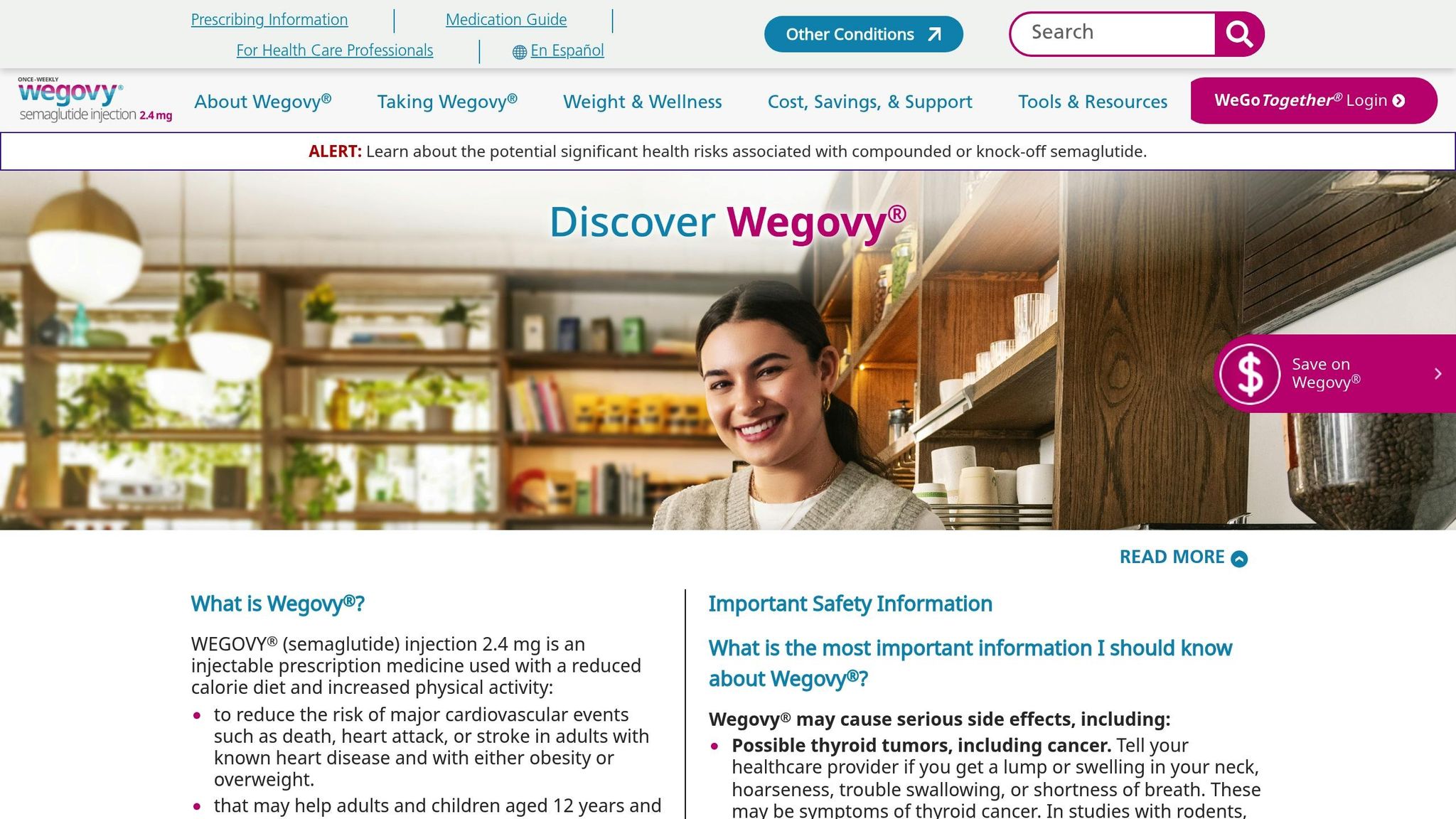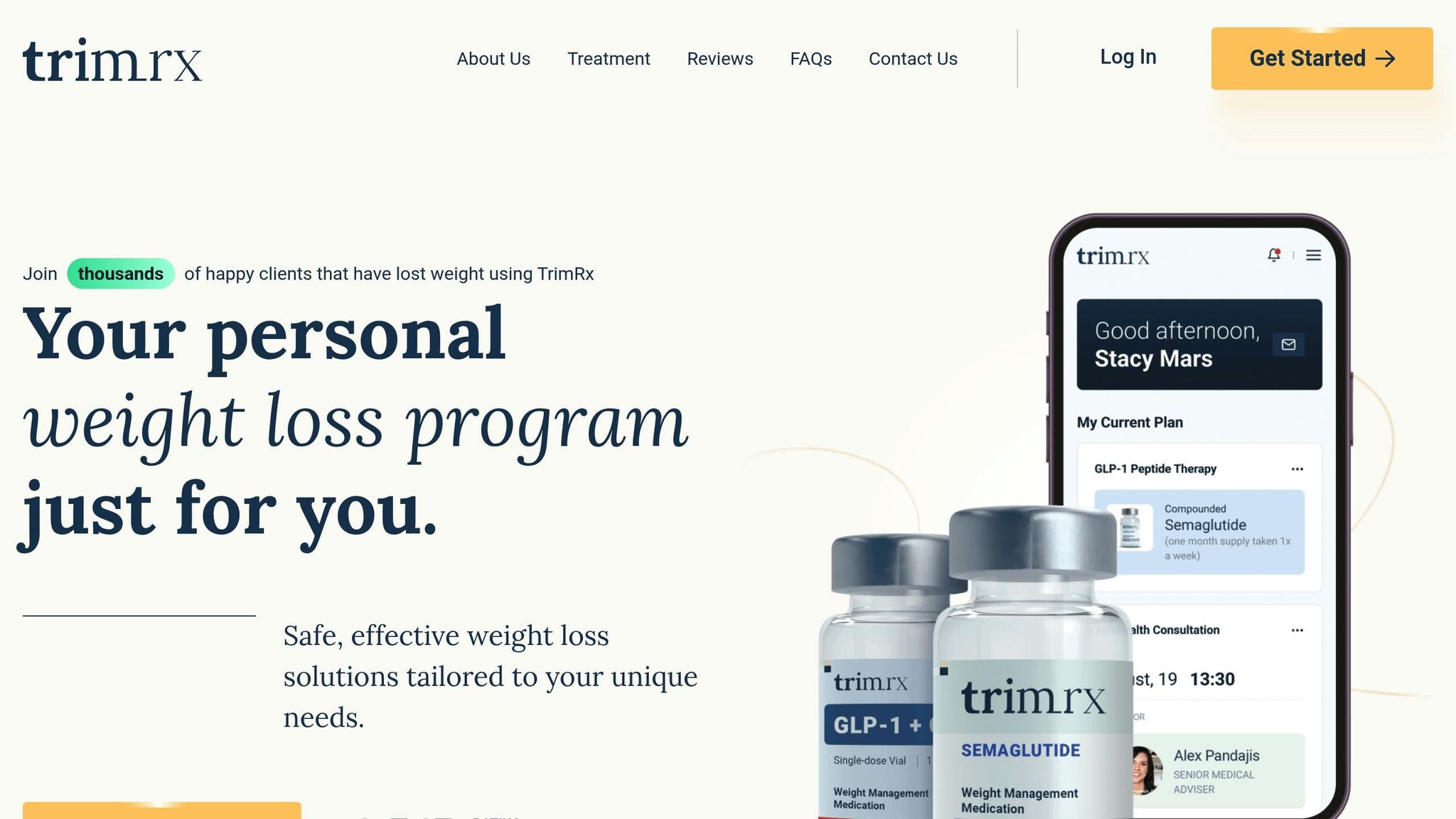Mounjaro Insurance Coverage: What to Know

Insurance coverage for Mounjaro (tirzepatide) depends on the reason for your prescription and your insurance plan. Mounjaro is FDA-approved for Type 2 diabetes, but off-label use for weight loss is rarely covered. Here’s what you need to know:
- For Type 2 diabetes: Most insurance plans, including Medicare and Medicaid, cover Mounjaro. Approval often requires:
- A confirmed diagnosis of Type 2 diabetes.
- Proof that other diabetes treatments were ineffective.
- Prior authorization with supporting medical documentation.
- For weight loss: Insurance rarely covers Mounjaro for this use. Some insurers may consider alternatives like Zepbound, which is approved for weight management.
- Costs: Without insurance, Mounjaro is expensive. Savings programs from Eli Lilly can lower costs for those with commercial insurance but are unavailable for Medicare/Medicaid users.
- Approval process: Meeting step therapy requirements and submitting detailed documentation improves your chances. If denied, appeals have an 82% success rate.
Navigating coverage requires understanding your plan’s rules and working closely with your doctor. For additional support, programs like TrimRX offer personalized options for weight management.
Wegovy, Mounjaro, Ozempic… How are they covered by insurance

How to Qualify for Mounjaro Insurance Coverage
Getting insurance to cover Mounjaro involves meeting specific medical and administrative requirements. The approval process can differ depending on why your doctor prescribes the medication and the specifics of your insurance plan.
FDA Approval and Its Role in Coverage
The FDA has approved Mounjaro only for treating Type 2 diabetes in adults – not for weight loss. This distinction plays a major role in determining insurance coverage. As Drugs.com explains:
"If your insurance pays for Mounjaro, it will typically only be paid for when it is prescribed for its FDA-approved indication, type 2 diabetes in adults. Mounjaro is not approved as a weight loss medication, and insurance companies will not typically cover Mounjaro for this use, even if your doctor writes you a prescription for weight loss (known as an ‘off-label’ indication)."
However, Zepbound, which contains tirzepatide and is approved for weight management, may make insurance approval for weight loss easier.
Prescription Requirements and Proving Medical Necessity
To qualify for insurance coverage, you’ll need both a valid prescription and thorough documentation that shows Mounjaro is medically necessary for your condition. Insurers rely on detailed proof to approve coverage.
For Type 2 diabetes, insurance companies typically require:
- A confirmed diagnosis of Type 2 diabetes mellitus
- Evidence of poor blood sugar control (e.g., high HbA1c levels despite current treatments)
- Proof that other diabetes medications were tried but did not work effectively (a process often called step therapy)
- A treatment plan that includes dietary adjustments and physical activity recommendations
Your doctor will also need to submit a prior authorization form and a Letter of Medical Necessity to your insurer. This paperwork should include your medical history, the clinical reasons for prescribing Mounjaro, and supporting documents like lab results and progress notes.
As highlighted by the Florida Surgery & Weight Loss Center:
"The most critical factor determining insurance coverage for Mounjaro is your diagnosis."
The exact requirements can differ based on your insurance provider, which is explored further below.
Insurance Plan Variations and Coverage
Mounjaro coverage rules depend heavily on your type of insurance and the specifics of your plan’s formulary. Commercial insurance plans often provide better coverage for Mounjaro when prescribed for Type 2 diabetes. These plans may also allow access to the Mounjaro Savings Card Program, which can reduce costs to as low as $25 for a one-, two-, or three-month supply.
Medicare and Medicaid also cover Mounjaro for Type 2 diabetes, but their requirements are stricter. These plans typically demand more extensive documentation of prior treatment failures and do not permit manufacturer savings programs.
For weight management, some insurers require patients to meet certain Body Mass Index (BMI) thresholds. These include having a BMI of 30 or higher, or a BMI of 27 or higher with at least one weight-related health condition, such as high blood pressure, high cholesterol, sleep apnea, or heart disease.
Each insurance plan has its own formulary, which determines what medications are covered and at what cost. Even when Mounjaro is included, prior authorization is often required before coverage kicks in.
Mounjaro Costs and Ways to Save Money
Navigating the costs of Mounjaro can feel overwhelming, but understanding your options can make a big difference. Mounjaro is an expensive medication, and your out-of-pocket expenses will depend largely on your insurance plan. Factors like copay structures, deductibles, and coinsurance rates all play a role. Many commercial insurance plans classify Mounjaro as a specialty drug, which often means higher cost-sharing. For those using government-funded programs such as Medicare Part D or Medicaid, savings may kick in after meeting specific thresholds.
Cost Considerations
For those without insurance, Mounjaro’s price tag is steep due to its classification as a specialty medication. If you do have insurance, your final costs will depend on the details of your plan. Commercial insurance policies often place specialty drugs like Mounjaro in higher pricing tiers, leading to increased cost-sharing. However, programs like Medicare Part D and Medicaid may offer some relief after you meet certain requirements.
Savings Programs and Assistance Options
There are ways to reduce the financial burden of Mounjaro. Eli Lilly, the manufacturer, provides savings programs for individuals with commercial insurance. These programs can significantly lower copay costs, but they’re not available to those enrolled in government-funded healthcare plans. Be sure to check the specific eligibility requirements to see if you qualify.
Other cost-saving strategies include:
- Looking into patient assistance programs for those who meet income or other qualifying criteria.
- Comparing pharmacy prices, including mail-order services, to find the best deal.
- Using pre-tax dollars from Flexible Spending Accounts (FSAs) or Health Savings Accounts (HSAs) to cover prescription costs.
These options can help you manage expenses while maintaining access to the treatment you need.
Alternative Access Through TrimRX

If you’re seeking a personalized weight management program, TrimRX offers tirzepatide-based treatments, including Mounjaro®, starting at $1,249. This option provides an alternative route for those looking for customized care.
sbb-itb-e2779c3
How to Get Insurance Approval for Mounjaro
Getting insurance approval for Mounjaro can be a bit of a challenge. Most insurers don’t automatically cover this medication, especially when it’s prescribed for weight management. To improve your chances, it’s important to understand the specific requirements and have all the necessary documentation ready.
Approval usually depends on meeting certain medical criteria and following the insurer’s administrative process.
Meeting Step Therapy Requirements
Step therapy means you’ll need to try other, less expensive medications first – and show that they didn’t work – before your insurance will consider covering Mounjaro.
For example, many Blue Cross Blue Shield (BCBS) plans classify Mounjaro as a Step 2 medication for treating type 2 diabetes. This means you’ll need to show that you’ve already tried and failed with two Step 1 treatments, such as Ozempic or Trulicity, before Mounjaro can be approved.
To meet this requirement, your insurance company will ask for detailed records. These should include:
- The specific medications you tried
- Dosages and how long you used them
- Clinical reasons for stopping those treatments
Once you’ve met the step therapy requirements, the next hurdle is securing prior authorization.
Getting Prior Authorization
Prior authorization involves your healthcare provider submitting a formal request to your insurance company, explaining why Mounjaro is medically necessary for you.
Your doctor’s request should include:
- A clear explanation of why Mounjaro is needed over other treatments
- Your medical history and details of previous treatments
- Information about your current health and how Mounjaro could benefit you
If you’re seeking approval for weight loss, insurers often require proof that you’re actively participating in a supervised diet and exercise program. This helps demonstrate that you’re committed to making lifestyle changes to support your treatment.
Key Points About Mounjaro Insurance Coverage
Navigating the insurance process for Mounjaro can feel overwhelming, but understanding some key details can significantly improve your chances of approval.
In 2023, only 31% of Mounjaro prescriptions were initially approved. Additionally, around 6% of prior authorization requests are denied at first, yet surprisingly, only 11% of those denials are appealed – despite 82% of appeals being successful. It’s important to know that appeals usually need to be submitted within 30 to 60 days, though some insurance plans may allow up to 180 days.
One of the most effective tools during the appeals process is thorough documentation, including a Letter of Medical Necessity. This kind of detailed paperwork can make a big difference in strengthening your case.
Collaborating closely with your healthcare provider and understanding the specific requirements of your insurance plan is crucial. If your initial request gets denied, don’t lose hope. With such a high success rate for appeals, taking the time to file one is often worth the effort.
For those looking for extra guidance, TrimRX offers personalized weight loss programs. These programs include tailored consultations, custom prescriptions, and ongoing support to help you navigate both your treatment plan and the insurance process effectively.
FAQs
What can I do if my insurance denies coverage for Mounjaro?
If your insurance denies coverage for Mounjaro, don’t lose hope – there are steps you can take to challenge their decision. Start by carefully reading the denial letter to pinpoint why the coverage was denied. Once you understand their reasoning, reach out to your insurance provider directly. Ask for clarification on their requirements and whether submitting extra documentation, like a letter of medical necessity from your doctor, could strengthen your case.
Next, collaborate with your healthcare provider to file a formal appeal. Make sure to follow the exact process outlined by your insurance company and provide any requested details as quickly as possible. Staying persistent and maintaining clear communication can often improve your chances of overturning the denial.
Is financial assistance available for Medicare or Medicaid users to help cover the cost of Mounjaro?
Unfortunately, the Mounjaro Savings Card program isn’t available for individuals enrolled in government-funded healthcare plans such as Medicare or Medicaid. This limitation is common across many pharmaceutical savings programs.
If you’re covered by Medicare or Medicaid, it’s a good idea to talk to your healthcare provider. They might be able to suggest alternative resources or options to help with managing your expenses.
What steps can I take to get my insurance to approve Mounjaro for weight management?
To improve your chances of getting insurance approval for Mounjaro when it’s prescribed for weight management, here are some steps to consider:
- Submit detailed medical records: If you have type 2 diabetes, include that diagnosis. If not, ensure your documentation highlights medical necessity, such as a specific BMI and at least one weight-related condition like high blood pressure or sleep apnea.
- Provide a history of past treatments: Share records of any weight management medications or therapies you’ve tried before. Include details like dosage, how long you used them, and why they were discontinued.
- Make the case for Mounjaro: Your doctor should clearly explain why Mounjaro is the most suitable treatment for your situation compared to other available options.
If you need extra assistance, services like TrimRX can help create personalized weight loss plans using medications like Mounjaro. They also offer guidance to ensure you have the right documentation and support for insurance approval.
Related Blog Posts

Transforming Lives, One Step at a Time
Keep reading
Ultimate Guide to Semaglutide Dose Customization
This guide explores semaglutide dosing for diabetes and weight loss, emphasizing personalized adjustments for optimal results.
6 Common Drug Interactions with GLP-1 Medications
Learn about six common drug interactions with GLP-1 medications and how to manage potential risks for safe treatment.
Semaglutide vs. Tirzepatide: Max Dose
Explore the differences between two weight loss medications, their maximum doses, effectiveness, and safety profiles for better health outcomes.
GLP-1 Diet Plan: 7-Day Meal Guide
Learn how to effectively pair GLP-1 medications with nutritious meal planning for weight loss, improved digestion, and stable blood sugar.
Nausea and GLP-1 Medications: Solutions That Work
Learn effective strategies to manage nausea from GLP-1 medications, including dietary tips and the importance of personalized dosing.
5 Signs GLP-1 Medication Is Working for You
Learn the key signs that indicate your GLP-1 medication is effectively aiding weight loss, appetite control, and blood sugar management.
Plateau Problems: Restarting Weight Loss
Stalled weight loss on GLP-1 medications is common but manageable. Explore strategies to break through plateaus and regain momentum.
Body Fat Percentage Estimator – Know Your Stats
Estimate your body fat percentage in seconds with our free tool. Just input your height, weight, and more for instant results. Try it now!
Wegovy vs Ozempic: Complete Comparison
Explore the differences between two popular medications for weight management and diabetes, including dosing, side effects, and effectiveness.









